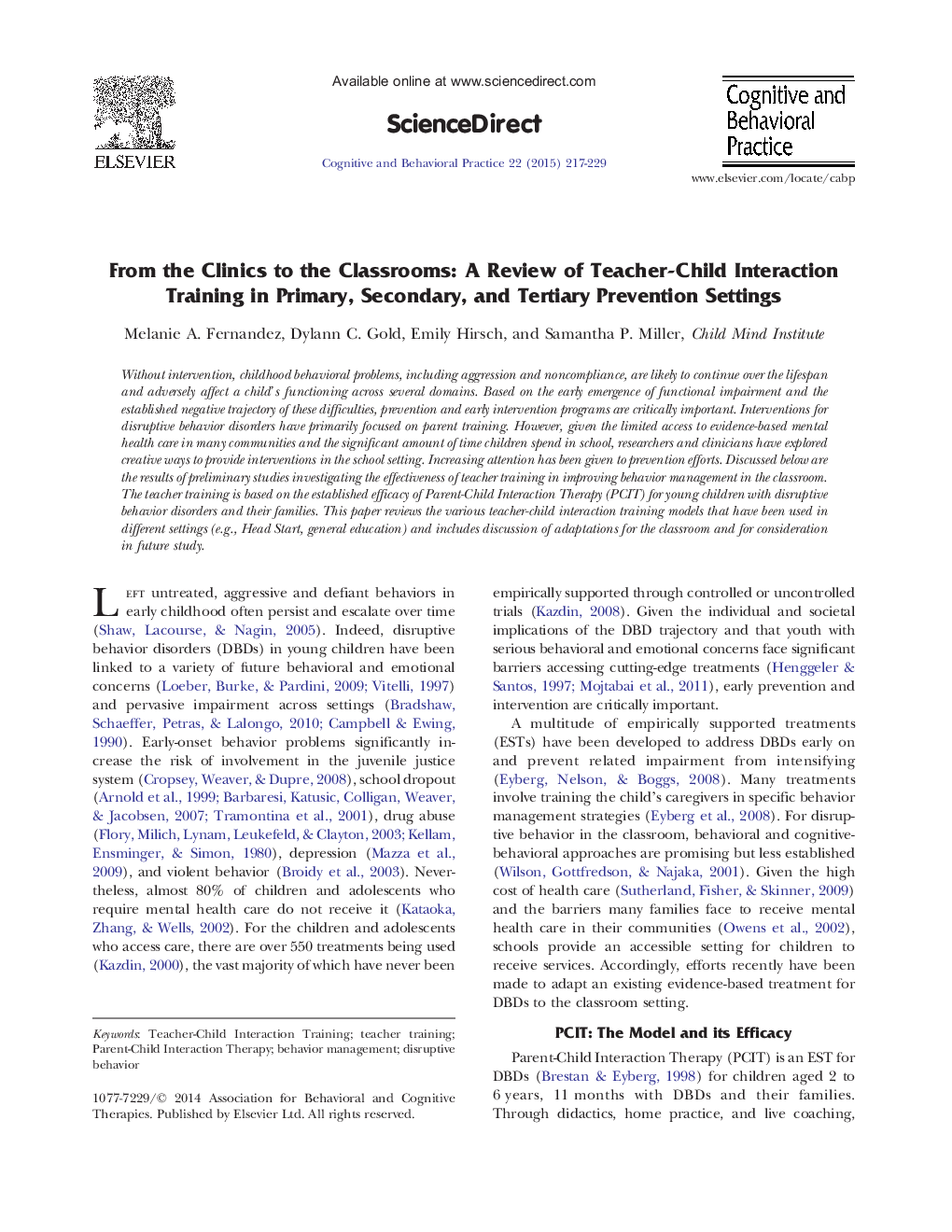| کد مقاله | کد نشریه | سال انتشار | مقاله انگلیسی | نسخه تمام متن |
|---|---|---|---|---|
| 904250 | 916815 | 2015 | 13 صفحه PDF | دانلود رایگان |
• We present the rationale for intervening in classrooms given concern about disruptive behavior in the school setting.
• We identify and describe an adaptation of PCIT to be considered for the classroom.
• We detail the existing Teacher-Child Interaction Training (TCIT) evidence base and compare and contrast TCIT models.
• We detail our current model and provide examples of strategy implementation.
Without intervention, childhood behavioral problems, including aggression and noncompliance, are likely to continue over the lifespan and adversely affect a child’s functioning across several domains. Based on the early emergence of functional impairment and the established negative trajectory of these difficulties, prevention and early intervention programs are critically important. Interventions for disruptive behavior disorders have primarily focused on parent training. However, given the limited access to evidence-based mental health care in many communities and the significant amount of time children spend in school, researchers and clinicians have explored creative ways to provide interventions in the school setting. Increasing attention has been given to prevention efforts. Discussed below are the results of preliminary studies investigating the effectiveness of teacher training in improving behavior management in the classroom. The teacher training is based on the established efficacy of Parent-Child Interaction Therapy (PCIT) for young children with disruptive behavior disorders and their families. This paper reviews the various teacher-child interaction training models that have been used in different settings (e.g., Head Start, general education) and includes discussion of adaptations for the classroom and for consideration in future study.
Journal: Cognitive and Behavioral Practice - Volume 22, Issue 2, May 2015, Pages 217–229
